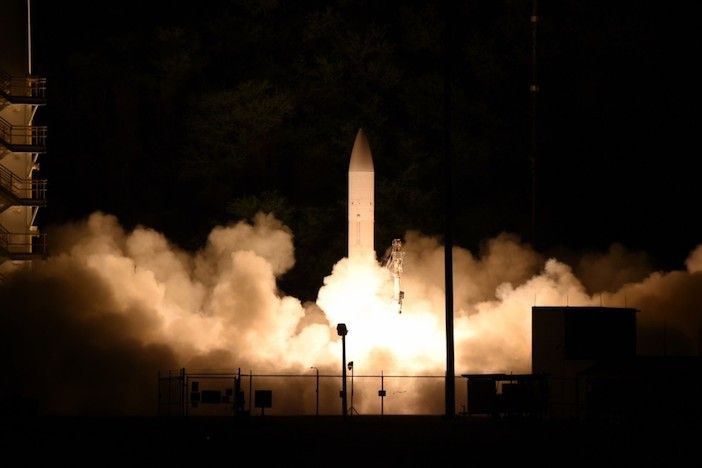The US Department of Defense has successfully tested a demonstrator hypersonic missile in a flight experiment conducted from a range in Hawaii.
The US Navy and Army jointly executed the launch of the common hypersonic glide body (C-HGB), which flew at hypersonic speed to a designated impact point during March. The Missile Defense Agency (MDA) monitored and gathered tracking data from the flight experiment to inform its development of systems designed to defend against adversary hypersonic weapons.
Information from this and future experiments will be used by the US Department of Defense (DoD) to further develop its hypersonic technology.
”This test builds on the success we had with Flight Experiment 1 in October 2017, in which our C-HGB achieved sustained hypersonic glide at our target distances,” said Vice Adm. Johnny Wolfe, director of the US Navy’s Strategic Systems Programs, the lead design body for the C-HGB.
”In this test we put additional stresses on the system and it was able to handle them all. Today we validated our design and are now ready to move to the next phase towards fielding a hypersonic strike capability.”
According to the DoD, hypersonic weapons, capable of flying at speeds greater than five times the speed of sound (Mach 5), are highly maneuverable and operate at varying altitudes. This provides the warfighter with an ability to strike targets hundreds and even thousands of miles away, in a matter of minutes, to defeat a wide range of high-value targets.
Delivering hypersonic weapons is one of the DoD’s highest technical research priorities currently.
”This test was a critical step in rapidly delivering operational hypersonic capabilities to our warfighters in support of the National Defense Strategy,” said US. Army LTG L. Neil Thurgood, director of hypersonics, directed energy, space and rapid acquisition, from the US Army. “We successfully executed a mission consistent with how we can apply this capability in the future. The joint team did a tremendous job in executing this test, and we will continue to move aggressively to get prototypes to the field.”
The C-HGB will comprise the weapon’s conventional warhead, guidance system, cabling, and thermal protection shield. The US Navy and Army are working with industry to develop the C-HGB with Navy as the lead designer, and the Army as the lead for production. Each service will use the C-HGB, while developing individual weapon systems and launchers tailored for launch from sea or land.
“Hypersonic systems deliver transformational warfighting capability,” said Mike White, assistant director, Hypersonics, OUSD Research and Engineering (Modernization). “The glide body tested today is now ready for transition to Army and Navy weapon system development efforts and is one of several applications of hypersonic technology underway across the Department. These capabilities help ensure that our warfighters will maintain the battlefield dominance necessary to deter, and if necessary, defeat any future adversary.”





